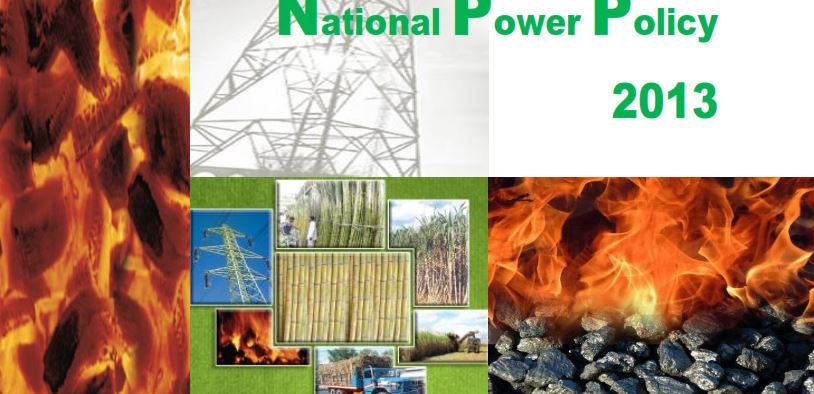Nawaz says his party overcame the energy crisis. Is it true?

Former Prime Minister (PM) Nawaz Sharif recently asserted the claim that the outgoing Pakistan Muslim League – Nawaz (PML-N) government has eradicated terrorism and ended power shortages in the country. This article seeks to explore the truth in the latter part of this statement.
Nawaz govt’s ambitious National Power Policy (2013)
Back in 2013, the government of Pakistan developed an energy policy – the “National Power Policy” (NPP) – which was as ambitious as Nawaz’s recent claim. The report’s vision stated: “Pakistan will develop the most efficient and consumer centric power generation, transmission, and distribution system that meets the needs of its population and boosts its economy in a sustainable and affordable manner”. The report also presented a vague set of goals which included such statements as “create a culture of energy conservation and responsibility”, “promote world class efficiency in power generation” and “build a power generation capacity that can meet Pakistan’s energy needs in a sustainable manner”, and “create a cutting edge transmission network”.
A recent news report claims that Pakistan’s energy sector’s circular debt has hit a record number of Rs 992 billion
The targets are more tangible, such as “Decrease the supply demand gap from 4500 – 5000 MW today to 0 by 2017”, “Decrease cost of generation from 12c/unit today to 10c/unit by 2017”, “Decrease transmission and distribution losses from 23-25 percent to 16 percent by 2017”, and “Increase collection from 85 percent to 95 percent by 2017”. The idea is neatly summarised in the following diagram:

Screengrab from http://www.ppib.gov.pk/National Power Policy 2013.pdf
The false claims on circular debt
The NPP report goes on to present the strategy that the government would adopt in order to meet its goals and targets. The first step – which the report claims that the government had already taken at the time of the report’s composition in 2013 – was the elimination of circular debt. The NPP report claims that the government had already retired the circular debt, which resulted in the resurrection of certain plants that had been rendered dormant due to a lack of feedstock or existence of disputes, thereby adding the supply of 1700 MW to the national circuit. However, a recent news report claims that Pakistan’s energy sector’s circular debt has hit a record number of Rs992 billion. The report further suggests that the Ministry of Finance had misreported the number to be Rs 472.678 billion, as of November 30, 2017, by choosing not to include and explain another Rs450 billion, which was accredited to the Power Holding Private Limited, which was created to generate funds from commercial banks. Thus, the PML-N government’s claim can be believed to be false.
Failure in ‘rehabilitation and expansion’ of Gencos
The second step stated by the National Power Plan 2013 was the “rehabilitation and expansion” of all the Gencos, i.e. Jamshoro Power Company Limited (Genco-I), Central Power Generation Company Limited (CPGCL) (Genco-II), Northern Power Generation Company Limited (NPGCL) (Genco-III), and Lakhra Power Generation Company Limited (LPGCL) (Genco-IV). The report claimed that after the required rehabilitation and expansion, the Gencos would together produce an added 1,447 MW within a year.

Source: http://jpcl.com.pk/
Of the Gencos, Jamshoro Power Company (Genco-I) has only just signed an Engineering, Procurement, and Construction (EPC) contract for 5 years with Siemens Harbin Electric International (HEI) for the first 660 MW. Northern Power Generation Company Limited (NPGCL/Genco-III/Muzaffargarh) has recently been slammed with an Rs 5 million fine for auxiliary power consumption, while Genco-IV (Lakhra Power Generation Company Limited) recorded the worst AF (availability factor) of 26 percent, over the 2014-2015 period, showing dismal progress in power generation. The only Genco to have shown some promise was Genco-II, Central Power Generation Company Limited (Guddu), which showed an increase in its contribution to the national grid by 400-500 MW at the beginning of the current fiscal year. However, even Guddu had a less-than-acceptable AF of 43 percent in 2014-15 and 45 percent in 2015-16 of a guaranteed availability of 80 percent.
By late January this year, all the Gencos were reported to have a less than acceptable Availability Factor – indicating that for a majority of time, these plants were either on outage or standby mode
The availability factor (AF) of any power plant is the percentage of productive time that the power plant uses in the production of power, therefore, an important indicator in the productivity of any such plant. By late January this year, all the Gencos were reported to have a less than acceptable AF – indicating that for a majority of time, these plants were either on outage or standby mode – recording an alarmingly high cumulative loss of 15 billion electricity units over the past two years.
Regarding the Gencos, Nepra’s Performance Evaluation Report (PER) noted: “A poor state of affairs at Gencos resulting from equipment deterioration, lack of scheduled and preventive maintenance, insufficient technical expertise and poor management […] squandering the potential to generate significant amount of economically efficient energy […] Had these limits not been exceeded by these machines and had they remained in operation during that period, a huge amount of energy – around 14,109m unit could have been produced by them.”
Needless to say, Nepra wildly missed its target on this front, too.
The promises of establishing new power plants
Thirdly and finally, the NPP report suggests the establishment of new power plants for the expansion of the country’s power generation base. These include 50 MW FFC Energy Limited, 56 MW Zorlu Jhimpir project, 50 MW Foundation Wind Energy I, 50 MW China Three Gorges, and 50 MW Foundation Wind Energy II which total to 256 MW; Sapphire Wind Power Pvt Ltd and Metro Wind Power Co Ltd which amounts to a total of 100 MW, and Uch-II power project, which alone was projected to produce 404 MW.
On the wind power front, the PML-N government has, to an extent, delivered on its claims. Even though its plans did not materialise as envisioned in the NPP in 2013
The report also suggests the completion of 2,726 MW worth of wind projects, 341 MW worth of solar projects, and 388 MW worth of hydel projects by 2016. Furthermore, the Patrind and Gulpur hydropower projects were suggested to be completed by December 2017.
Wind power: Finally something to cheer about
On the wind power front, the PML-N government has, to an extent, delivered on its claims. Even though its plans did not materialise as envisioned in the NPP in 2013, nevertheless, the government has managed to set up a number of wind energy projects including the Three Gorges First Wind Farm (149.5 MW) which has been operational since December 2014, Foundation Wind Energy I & II Pvt Ltd (100 MW), operational since November 2015, Sapphire Wind Power Pvt Ltd (d52.8 MW) operational since November 2015, Gul Ahmed Wind Power Ltd (50 MW) operational since October 2016, and many others. However, what is noticeable is the increasing privatisation of the wind energy sector.

Source: Muzaffar Bokhari on Flickr
Pioneering Solar Power in Pakistan
On the solar power front, it would be fair to say that the PML-N government has been a pioneer. It has set up seven projects so far, including the 1000 MW capacity Quaid-e-Azam Solar Park, and has nearly forty more projects lined up, of which twelve are under construction. However, in this area, too, privatisation is prominent, with companies such as Harappa Solar Pvt Ltd, Bukhsh Solar Pvt Ltd, Safe Solar Power Pvt Ltd and others actively participating in the country-wide welcome of solar power generation.

Photo courtesy Quaid-e-Azam Solar Power (Pvt) Ltd.
Having said that, it is not the setting up of a power project that entails power production, but the actual generation of electricity. Reports circulating the inefficiency of solar projects – suggesting that the 400 MW Quaid-e-Azam Solar Park is generating only 18 MW currently – coupled with the wastefulness of the Gencos suggest that, though the Ministry of Finance may suggest that the economy is on the road to recovery since the beginning of the 2016-2017 fiscal year, the energy sector is still not living up to the expectations of 2013. And with power outages still rampant throughout the country, it would be safe to say that the most important target set up in the National Power Plan 2013 has not been achieved: that of putting an end to load shedding.
The author is a Lahore-based journalist. He is a correspondent for The Diplomat, and The Asia Times and contributes to various Pakistani and international publications. He tweets @khuldune










